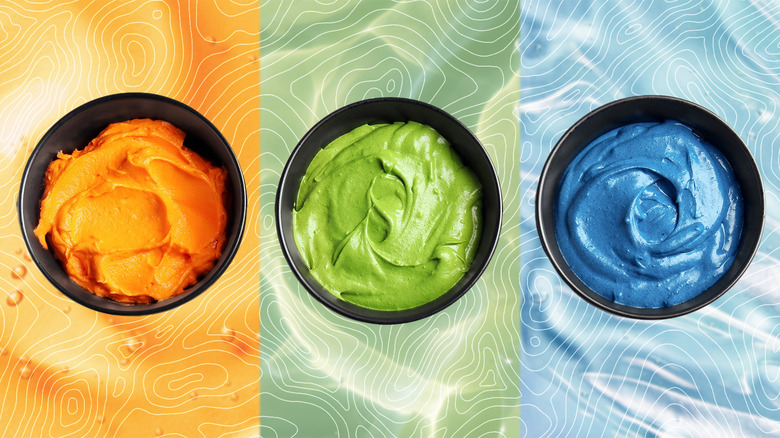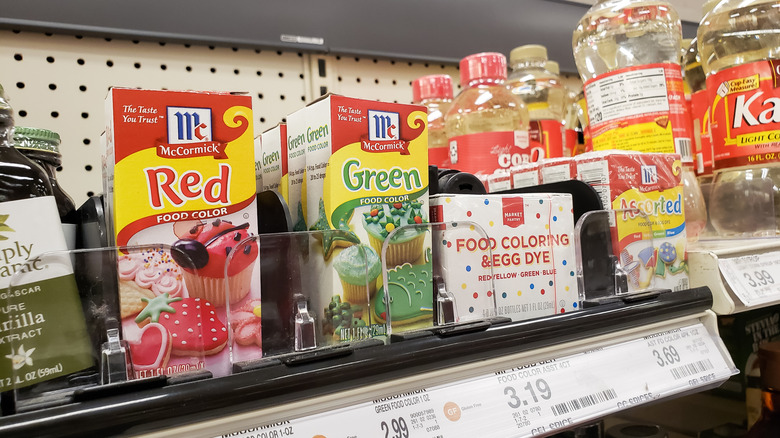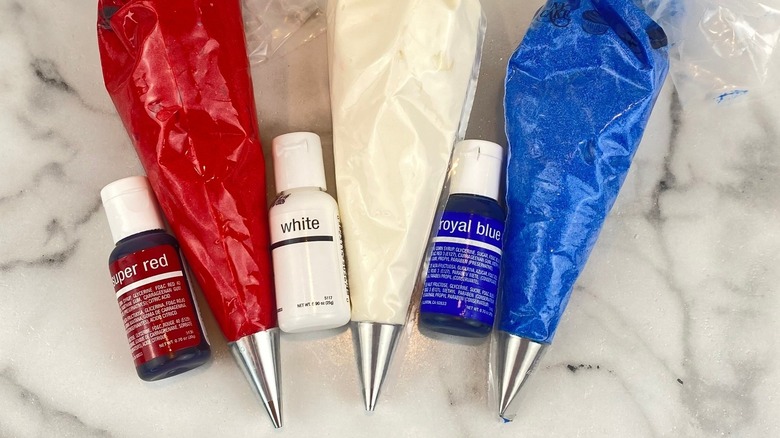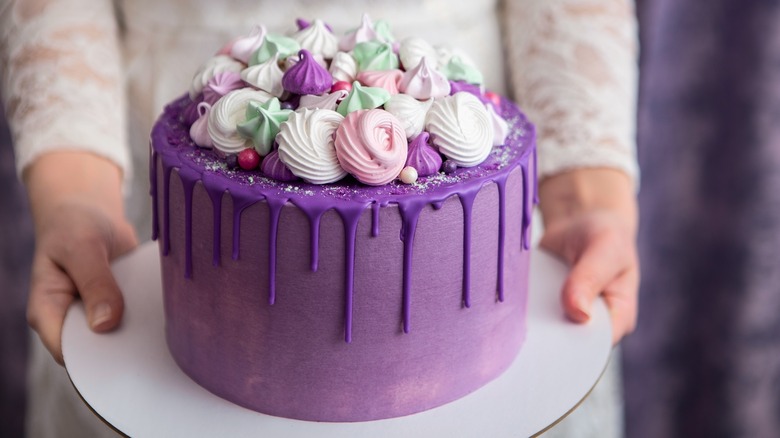The Difference Between Liquid, Gel, And Liqua-Gel Food Colorings
Grocery stores are full of unique baking items that are ideal for specific situations and tasks, and that's very clear when it comes to the differences in food colorings. Most of us are probably familiar with those little squeeze tubes of food coloring in our family pantries, which found their way into homemade cakes and cookies. Those affordable general use food colorings are usually of the liquid variety, but that is actually only one of the many options you have for adding color to food and baked goods. Other commonly available, but slightly more specialized, styles of food coloring include gel and liqua-gel, which are both handled differently than liquid food coloring, and will produce different results.
The main variations between food coloring options are in the intensity of the color, and the consistency of the dye. Liquid coloring is the thinnest option, close to water, but that also means it will produce the least vibrant colors. Liqua-gel, as the name would imply, is a middle ground choice. It has a thicker but still liquid consistency, like a syrup, and will impart more color than just liquid. Gel food coloring, also known as gel paste, is the most solid, but just a small amount is needed when you're cooking. And while bakers may have their personal preferences, none of these are really "better" than the other. The difference in composition between liquid, liqua-gel, and gel food colorings just means they each work best in different circumstances.
Liquid food coloring is thin and light
Liquid is your standard supermarket food coloring, and it's both cheap and widely available. It has a thin watery consistency because that is mostly what it's made from. It's just artificial food-safe dye mixed with water. The squeeze bottles are also great for less experienced cooks as they are really easy to handle.
The main advantage of liquid food coloring, beyond its accessibility, is that it's more foolproof. It takes a lot to produce a deep hue, which means you just keep adding individual drops until you get the color you want. Its thin consistency also means it mixes into batters and creams very quickly and easily. However, you need a lot of liquid coloring to get deeper colors, and that can water down recipes and affect their texture. Even if you aren't worried about the extra liquid in your baked goods you just won't get as vibrant a color.
The best use for liquid food coloring is when you just want a light hue that will only require a few drops, as other options might be too dark from the start. Because it's so thin it's also useful in things like cakes where you don't want to overmix the batter, or in thicker ingredients like buttercreams where it will be easier to mix in.
Liqua-gel is thicker and more concentrated in color
Liqua-gel food coloring is more specialized than liquid and may be harder to find in your area, but you can easily order it online. It's also made from water and synthetic dyes but with either glycerine, corn syrup, or both to give it that gel consistency. Since it is still liquid it also comes in dropper bottles, but when you squeeze out the coloring it's clearly thicker, more concentrated in color, and more viscous in texture.
If you are looking for stronger color liqua-gel is a great option. You can get an intense look with just a few drops. That's ideal for situations where you want something deep and vibrant without significant additives. But it can be harder to spread into doughs and batters, so it will require more aggressive mixing. It's also easy to go overboard if you aren't used to how little coloring you'll need to use.
Liqua-gels are probably the best all-purpose food coloring, as they blend the easy handling of liquid options with the greater intensity of other varieties, but you should still be cautious if you are looking for lighter colors. It's best with icing and frostings, and candies where you want the colors to really pop. Liqua-gels are also often available in a wide variety of colors.
Gel food coloring is almost solid and the most intensely colored
Gel and gel paste food coloring is made from the same ingredients as liqua-gel, water, dyes, glycerine, and corn syrup. But it has much less liquid, giving it a spreadable, pasty consistency. Since gel coloring is so intense you only need a small amount, which makes it great for people who go through coloring quickly. It's also very convenient for large-batch baking, as gel can easily color dozens of cookies or multiple cakes.
And of course the concentration means it produces dark hues better than the other options, making gel coloring great for striking presentations. The difficulty with gels is in both mixing and measuring. With so much color in small doses, it's hard to be precise with how dark you are making your food. It also requires even more effort to work into doughs than liqua-gel. The best tool to use with it is often a toothpick, which helps you remove small bits of this ultra-concentrated dye at a time.
Gel food coloring will work well with most of the same foods liqua-gel does, but may only be really helpful for people who are baking at scale, who want very deep colors, or who don't want the mess of more liquid alternatives.



